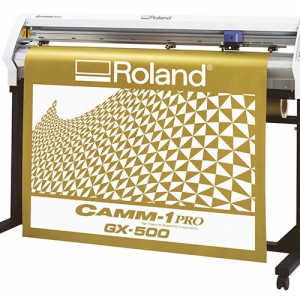Window Film During Home Renovation
January 13, 2017Homeowners, Why Not Tint Your Windows?
February 2, 2017If you’re wondering when is the right time to get a film plotter, the answer is most likely not right away. BUT, you may be a lot closer than you think. Traditional cutting methods can be time consuming and wasteful. Once you have the volume of car entering your shop, the plotter can make huge leaps in the overall efficiency of your tint shop.
The first question that anyone would like answered is what is the return on investment for a film plotter? If you’re doing automotive film for vehicles, then it’s very likely that at four vehicles per day, the plotter will pay itself off in just a couple months. Research has shown that people using a plotter in their tint shop have shown an increased work load capability and savings in material costs. However, the benefits go beyond these factors.
When one considers the time factor, it becomes obvious how this will greatly increase productivity. Someone who’s experienced may be able to cut a window film in 5 minutes – on average it takes 15 minutes. A film plotter will cut an average window film in 3-5 minutes with 100% accuracy. Eliminating waste through human error will cut costs in the long run.
Then we can look at the fact that no one can clean and prepare a window at the same time as cutting the film. While the plotter is cutting, the window can be prepared for application. This means that the same job takes half the time without requiring extra staff.
One saving that is guaranteed is that of reducing material wastage. The film plotter calculates the best layout to minimize wastage. While you can encourage your staff to do the same, this won’t always happen – particularly on busy days when they’re pushed for time. One can save 10-15% on material costs through optimizing how a sheet of film is utilized.
A film plotter is also able to cut accurately in situations where it’s not humanly possible to do so. Another thing with manual cutting, is that one always cuts the film an inch or two larger than is needed and then trim the edges. This wastes film and adds to the time taken on installation. The plotter will cut the film to the exact size needed, eliminating this waste.
If you look at how many vehicles you’re capable of doing per day at present, you could double this amount without any extra staff. Add to this the reduction in material wasted, you’ll see that the estimate of a couple month payback period is very realistic. So, the bottom line is that one starts becoming more productive and cutting costs from the moment you start using a plotter.

